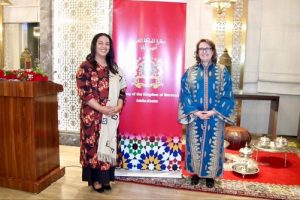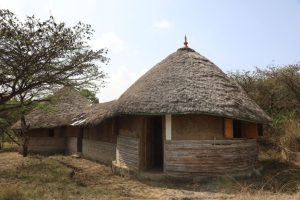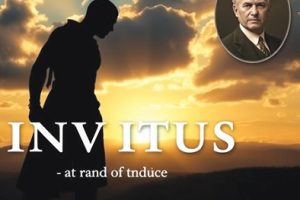
The cultural practice of cattle counting ceremony has been largely practiced by the Wolaita people, People of Southern Ethiopia, particularly in Kindo Didaye Woreda, one of the twelve Woredas of the Wolaita Zone.
As Yacob Hidoto stated on a study: “Cattle Counting Ceremony among the Wolaita (Ethiopia), the practices of cattle counting of Wolaita people, known as Dala and Lika, are ceremonies conducted to display one’s own cattle wealth numbering a minimum of hundred and thousand cattle respectively. Both the rituals have greater economic and environmental significance apart from enhancing social prestige, bonds and relationships among the communities and honoring men. The central figures in cattle counting rite are wealthy farmers who wish to achieve social esteem by demonstrating their cattle wealth.
In the first rite, Dala, a cattle owing farmer (Dalaawa) counts at least one hundred cattle. And in the second stage, Lika ritual, he is expected to have no less than one thousand cattle. Thus, to perform both the festivals working hard and accumulating cattle wealth is vital, as to Yacob.
The counting is held in a place designed especially. The location where the ritual conducted is usually around main road in the village that is suitable to accommodate such a large numbers of cattle and participants. If the person did not possess such land, he buys it from someone who is willing to sell strip of land for the purpose. The selected location fended with the trunk of local trees that not only serves as wall of the enclosure but also it is expected to grow as a permanent tree, and remain a sacred place forever transferring crucial message of the ritual from generation to generation.
The fences are built in a circular way that also include a major pole at the middle which in turn serves to lay bundle fruits (buluwa) that represent the number of cattle counted in the enclosure. The enclosure generally looks like the indigenous house of Wolaita albeit the former lacks the roof. As tradition dictates, the person who counts the cattle should be the one who has already hold the Dala ritual. And the person is named as “Molana” and he wears especial clothe named Kole.
The Molana counts the cattle using leaf of a tree that is edible by animals. He immerses the leaf in a pot that contains blood mixed with milk, butter and honey and beats the cattle so that they may enter into the enclosure designed for the counting. The blood in the pot comes from an ox and sheep that are slaughtered for that ritual purpose. Its intention is to safeguard the cattle against disease and to wish a long life for the Dalaawa.
If the fence is unable to accommodate more cattle, he counts the remaining cattle in the vicinity of the fence. He also counts the ropes of cattle representing missing cattle. Molana ties Dalas (pieces of metal) in neck of a cow and ox that belongs to that species. These cattle herald the ceremony to everyone who hears the sound of the pieces of metal at their neck.
At the end of the counting, Molana receives a mature ox that he chooses from the cattle he counted. Dalaawa, wearing especially made white clothes from head to feet and sitting on the horse, he utters his deeds, his forefathers and friends who supported him. Dalaawa uses idiomatic expression that highlights the respect he has, his wisdoms, wealth and great deeds of men in his village, raising a case to the observers to find their own hero to honor.
He is accompanied by his relatives and friends who also appreciate his deeds in local idioms such as Gayruwa and Geressa. They honor the Dalaawa, singing honorary songs “wostatakee sallaqe, wogotettaa darotette”. These are traditional songs. But the Christians prefer to use songs that rather praise God: “Tossaw hashu, Yesusawu hashu”. While the counting occurs, the horsemen and horsewomen rotate around the enclosure honoring the Dalaawa. At end of the counting, the Dalaawa gives the Dalas to the Molana to mark the public recognition of cattle wealth accumulated by the person.
Eating and drinking take place lavishly at especially designed place at the residence of Dalaawa. One of the main food items served in the feast is meat and its products. Some of the indigenous foods presented are meat, kochikochuwa, sulssuwa, guguwa, wotaya, pila, loggomuwa, muchuwa and so on. Major drinks served in the feast are esa and farso albeit soft and alcoholic beverages that are produced in industries are now widely used in the feast. The generous feast provided to the attendant creates a special moment to reflect on social issues, talk about great deeds and fames of Dalaawa and to take some lessons. The place of commensality are often arranged in a way that the attendants observe material wealth of the Dalaawa and his family, his gardens (darkua) and farm (shoqa) and house in general. Furthermore, the music and dance, and songs accompany the feast to motivate the guests particularly youths so that they may diligently work to accumulate wealth and aspire for public recognition of it.
The second ritual, Lika, refers to excellence in cattle wealth, money and wisdom. To achieve the status of Likaawa, a person must have at least one thousand cattle including those he shares with other individuals. Since the ritual requires accumulating more than one thousand cattle, few individuals succeed in conducting the ritual. A person who wishes to conduct Lika ritual has to achieve first Dalaawa status; even if he possess over one thousand cattle, it is not acceptable to start from Lika without conducting Dala ritual earlier.
Lika ritual is similar in many aspects with that of the Dala-in the preparation, the selection of site for establishment of the enclosure, feasts, clothing, music, dance, use of idiomatic expression to glorify of the person and the timing of the ritual. However, the number of guests and attendants taking parts in the Lika rite are much greater than that of the Dala ritual; so is the extent of feast prepared to the guest and attendants. Likaawa has to serve not only invited guests who also contribute some money (yesa), but also many persons who come either to observe or take part in the feast.
Once a person decides to carry out Lika, he invites his relatives, neighbors, friends and famous elders to set the date for the ceremony and fix type of gifts (Chacha) expected from his relatives and friends. Actual preparation takes places starting from that date onwards. The site for cattle counting is usually located near former Dala site; food and drinks are prepared and the messages are disseminated to the shareholders and guests about the ceremony.
At the day of the Lika ritual, shareholders bring the cattle to the place arranged for the counting rite. The candidate and his attendants, wearing the required traditional clothes, come to the ritual site. They sing songs to glorify the candidate. After they reach the site, Molana starts counting the cattle. He directs the animals to enter the enclosure arranged for the counting using a leaf of tree intended to spray blood with mixed butter, milk and honey upon the cattle. The counting also includes the ropes to represent animals that are not brought to the ritual place.
At the end of the counting, the Likaawa, wearing his clothes and holding his spear, starts to speak out his great deeds using expression that liken him to other great heroes remembered in the area and beyond. Larger numbers of attendants recognize his greatness, wealth and appreciate him with idiomatic expression like Gererisa and Gayriwa. Invited guests and observers take part in drinking and eating after the end of the ceremony. The feast associated with Lika takes extended days; and are accompanied by music and dance that entertain the participants.
The Ethiopian Herald July 22, 2020
BY STAFF REPORTER





